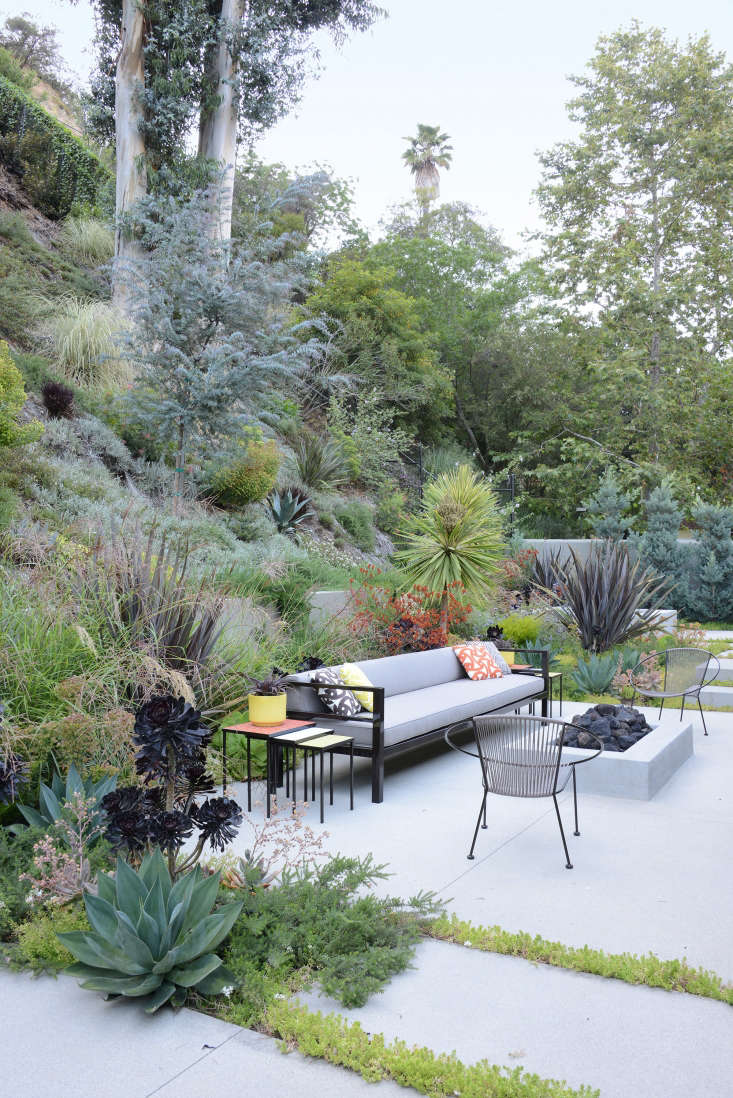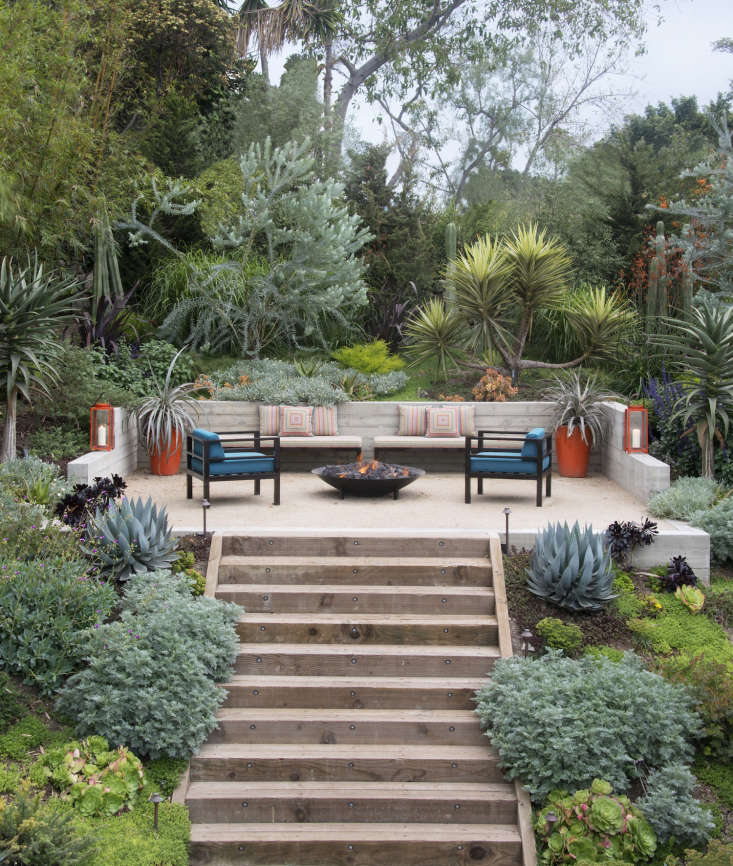Ever since caveman days (to use a technical term), people have gathered around fires for warmth, light, and companionship. Of course, fires and people have changed since then. Most homeowners who build a fire pit in their backyard or garden don’t use it for cooking—unless they’re toasting marshmallows. And many of today’s fire pits burn gas rather than wood.
What’s the right fire pit for your garden? To find out, we talked with Los Angeles–based landscape designer Judy Kameon, whose company Elysian Landscapes has completed many outdoor projects that include fire pits, mostly in California. (We recently featured a beautiful one in Designer Visit: An Indoor-Outdoor LA Garden by Judy Kameon.)
Here are her 10 top tips for adding a fire pit to a landscape.
Photography by Erik Otsea, courtesy of Elysian Landscapes, except where noted.

1. How do I add a fire pit to my backyard?
“There’s no hard and fast rule about where to put it,” says Judy. “Obviously, it depends on the size of the property and how you plan to use it. Some people like to have their fire pit tucked away as a destination, others want it to be a focal point that’s visible from the house.” Many people use their fire pit area as an extra room, a place for entertaining, casual dinners, and family gatherings. Especially if it’s conveniently situated, it can become part of an end-of-day ritual—enjoying a glass of wine there as the sun sets.

2. Gas fire pits vs. wood: why do you prefer gas?
“Gas is so much more convenient,” says Judy. “Unlike wood, it doesn’t give off any smoke when it burns.” That means people sitting around the fire don’t have to worry about the breeze blowing smoke in their eyes (or ending up with smoky clothes). And with no sparks flying out, burning gas is also safer.

3. How do fire pits work?
“We run a pipe off the main gas line in the house,” says Judy. “You need a plumber to put in the line to the specified point, and then connect it up to the fire pit.” Depending on where you live, a permit may be required; always check with local authorities. And since you’ll be running a gas line, choose the location well—if you change your mind after the fire pit is installed, it won’t be so easy to move it to a different spot.
4. But can a gas fire pit roast marshmallows?
“Absolutely!” says Judy. “When you put lava rock in the bowl, the rock absorbs the heat from the burning gas and radiates it out.”

5. How far should a fire pit be from the house?
“Your community may have restrictions that specify how far a fire pit must be from the house or other structures,” says Judy. “You should check with your local building department before going ahead.” (You might also get guidelines from a landscape designer, general contractor, or city planner.)
The amount of room you devote to your fire pit area depends on how you’ll be using the space. “If it’ll just be a family or intimate groups, about eight by ten feet should do it,” says Judy. If you’re a party animal, you’ll want to make room for more.

6. What are fire pits made of?
“These are generally prefab pieces, such as the one made by our sister company, Plain Air,” Judy says. “But we also construct concrete bowls on site. In those cases we can customize the size and design—some clients ask for a fire pit with a wide shelf where guests at a casual dinner can set down their plates.”

7. What surface is best for fire pits for backyards?
“The material can vary from decomposed granite and gravel to concrete, tile, and stone hardscapes,” says Judy. “The choice depends on the aesthetic of project, and what kind of seating is desired.” Obviously, you need a fireproof pad beneath a fire pit, but if you’re installing a gas fire pit there’s less of a safety concern (that is, no flying sparks).
8. How tall should a fire pit be?
Though they’re often called fire pits, “fire bowl” is more accurate, because they’re generally raised above the ground. “I like a fire pit that’s ten to twelve inches high, about coffee-table height, so you can put your feet up on it,” says Judy. Sometimes a custom fire pit is designed to be flush with built-in seating.

9. Do you have recommendations for fire pits with seating?
“I like both permanent seating, such as built-in banquettes, and chairs that people can move around,” Judy says. “We often design a space combining the two—the built-ins give you a generous amount of seating, especially in a tight space, while chairs allow flexibility and add an informal feel.” Plain Air makes a line of elegant stainless-steel-frame tables and chairs; its six-foot-long Daybed is covered in an outdoor fabric that comes in 15 colors.
10. How can you make a fire pit area feel like an outdoor room?
Judy feels that built-in seating gives the space a sense of permanence. It also helps to have the area surrounded by plantings, especially if they’re layered in different heights. “What I like about a fire pit is that it will significantly increase the use of your outdoor space,” she says. “Even in southern California it can get cool in the evening, and a fire pit lets you sit outside comfortably—sometimes even in winter.”
If you’re designing a garden from scratch or upgrading an existing one, start with our curated guides to Garden Design 101. For more of our favorite fire pits and fire bowls, see:
- 10 Easy Pieces: Portable Fire Pits
- Everything You Need to Know About Fire Bowls
- Landscape Architect Visit: The California Life, Outdoor Living Room Included
- Garden Visit: An Italian Terrace















Have a Question or Comment About This Post?
Join the conversation (2)